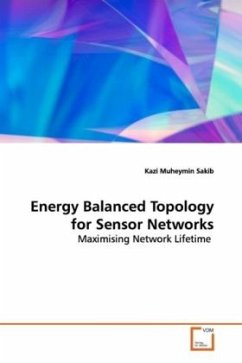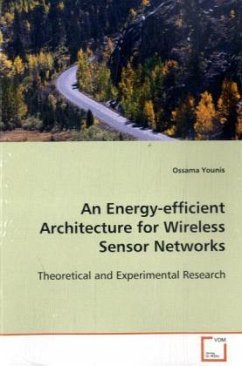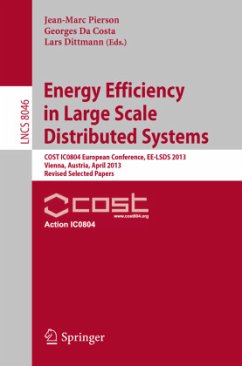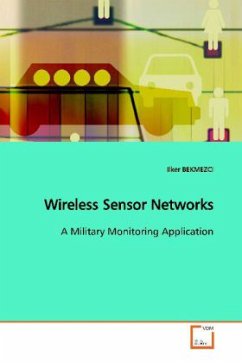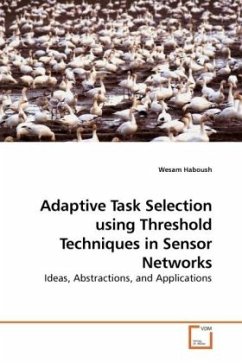
Topology Configurations for Energy Efficiency in Sensor Networks
Network Level Coordination
Versandkostenfrei!
Versandfertig in 6-10 Tagen
52,99 €
inkl. MwSt.

PAYBACK Punkte
26 °P sammeln!
Wireless Sensor Networks (WSNs) are an emerging technology, recently finding extensive application in scientific and military surveillance. Typical WSNs comprise hundreds of tiny, severely energy constrained sensor nodes that are statically deployed to collaborate and accomplish common application tasks. The effectiveness of a WSN depends on its efficiency in using the limited energysupply, and thus, energy conservation is a forefront research area for sensor network technology. WSNs are largely characterized by short-range multi-hop radio communications, which provides abundant scope for rout...
Wireless Sensor Networks (WSNs) are an emerging
technology, recently finding extensive application
in scientific and military surveillance. Typical
WSNs comprise hundreds of tiny, severely energy
constrained sensor nodes that are statically
deployed to collaborate and accomplish common
application tasks. The effectiveness of a WSN
depends on its efficiency in using the limited energy
supply, and thus, energy conservation is a forefront
research area for sensor network technology. WSNs
are largely characterized by short-range multi-hop
radio communications, which provides abundant scope
for routing-level energy conservation schemes.
WSNs are often densely deployed for robustness
against node and link failures, and only a sub-set
of nodes is required to be operating at any instant
to satisfy the application needs. This work aims to
exploit such connection redundancies in sensor
deployments, using network level adaptations, and
achieve energy efficiency.
technology, recently finding extensive application
in scientific and military surveillance. Typical
WSNs comprise hundreds of tiny, severely energy
constrained sensor nodes that are statically
deployed to collaborate and accomplish common
application tasks. The effectiveness of a WSN
depends on its efficiency in using the limited energy
supply, and thus, energy conservation is a forefront
research area for sensor network technology. WSNs
are largely characterized by short-range multi-hop
radio communications, which provides abundant scope
for routing-level energy conservation schemes.
WSNs are often densely deployed for robustness
against node and link failures, and only a sub-set
of nodes is required to be operating at any instant
to satisfy the application needs. This work aims to
exploit such connection redundancies in sensor
deployments, using network level adaptations, and
achieve energy efficiency.



